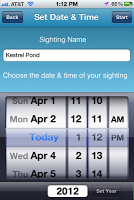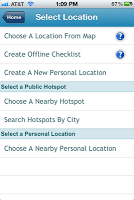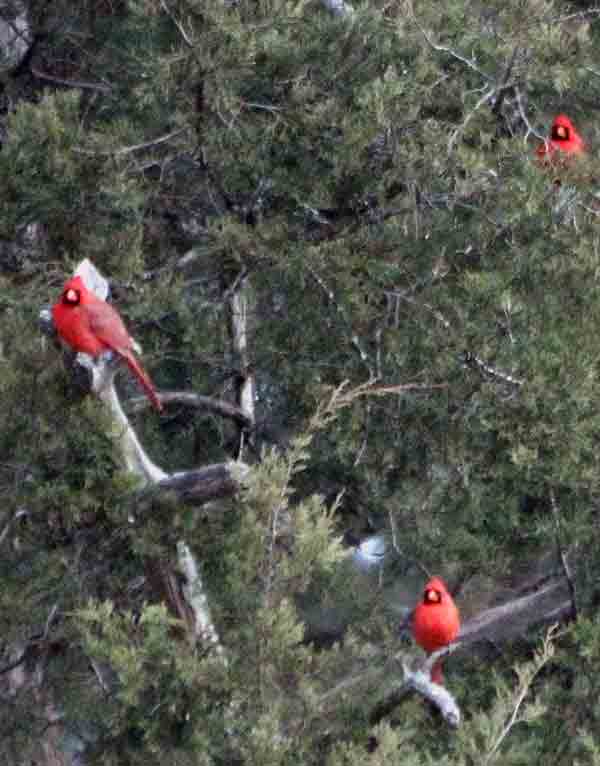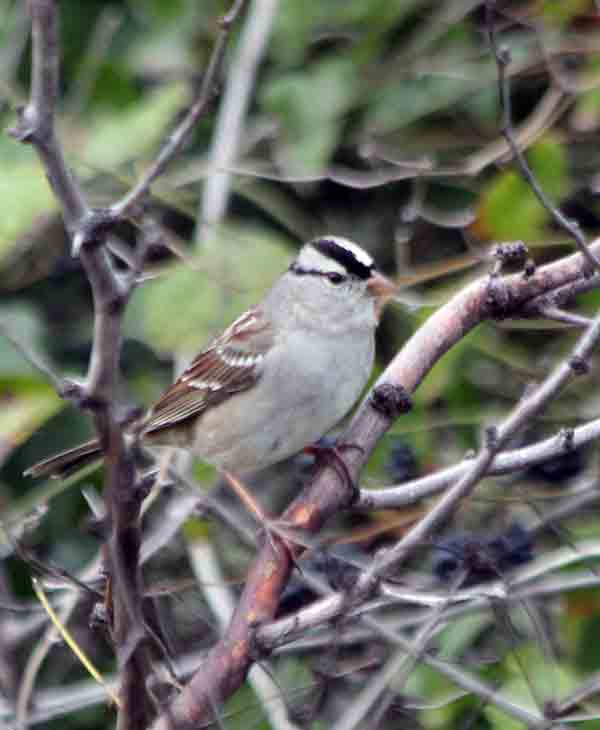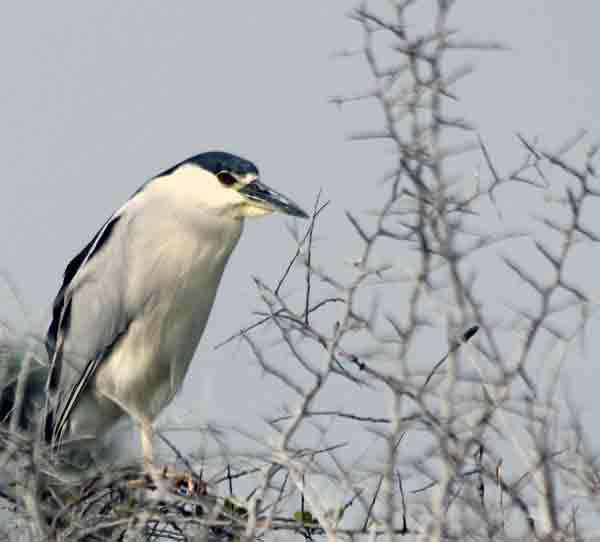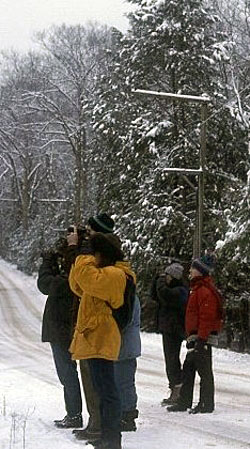
Christmas Bird Count participants on the Northhampton, MA count. Photo by Geoff LeBaron.
With this winter’s influx of winter finches and other northern visitors, birders throughout the Northeast have been saying, “I hope that bird stays around for the Christmas Bird Count!” You never know what you are going to find in late December birding but “Hope springs eternal in the human breast” among Vermont Birders for a Northern Hawk Owl or a Varied Thrush. The annual bird count starts in just two weeks.
The Christmas Bird Count came about as a reaction to slaughter. During the late 1800’s, there was a popular holiday tradition known as the Christmas “Side Hunt, a killing binge in which Americans went merrily into the woods to compete in shooting as many birds and small animals as they could within the holiday. People chose sides and went afield with their guns; whoever brought in the biggest pile of feathered (and furred) quarry won.
This was a time when conservation was in its beginning stages and many observers and scientists were becoming concerned about declining bird populations. Beginning on Christmas Day 1900, ornithologist Frank Chapman, an early officer in the then budding Audubon Society, proposed a new holiday tradition-a “Christmas Bird Census”- that would count birds in the holidays rather than hunt them.
So began the Christmas Bird Count. Thanks to the inspiration of Frank M. Chapman and the enthusiasm of twenty-seven dedicated birders, twenty-five Christmas Bird Counts were held that day. The locations ranged from Toronto, Ontario to Pacific Grove, California with most counts in or near the population centers of northeastern North America. Those original 27 Christmas Bird Counters tallied around 90 species on all the counts combined.
The 113th annual Christmas Bird Count involves tens of thousands of participants. This year’s count will take place between Dec 14, 2012 to January 5, 2013. It is the longest running Citizen Science survey in the world, providing critical data on population trends. Volunteers will be out across the nation and hemisphere bagging more than 50 million birds by eyeball.
Each count occurs in a designated circle, 15 miles in diameter, and is led by an experienced birder, or designated “compiler”.
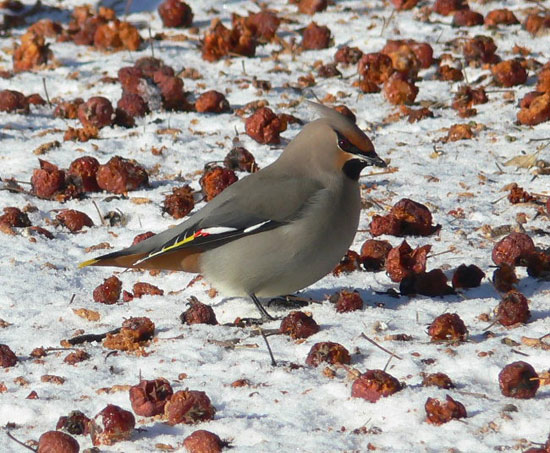
One of the “hoped for” birds for Vermont counters is the Bohemian Waxwing. photo ©Brook Lundquist
While there is a specific methodology to the CBC and you need to count birds within an existing Christmas Bird Count circle, everyone can participate! If you are a beginning birder, you will be able to join a group that includes at least one experienced birdwatcher. If your home is within the boundaries of a Christmas Bird Count circle, then you can stay home and report the birds that visit your feeder or join a group of birdwatchers in the field. If you have never been on a CBC before and you want to participate in a count this year, including feeder counting, please contact your count compiler prior to the count.
Click here to learn where Vermont CBCs are located, date of counts and compiler contact information. I plan to participate in the Plainfield CBC on December 15th.
